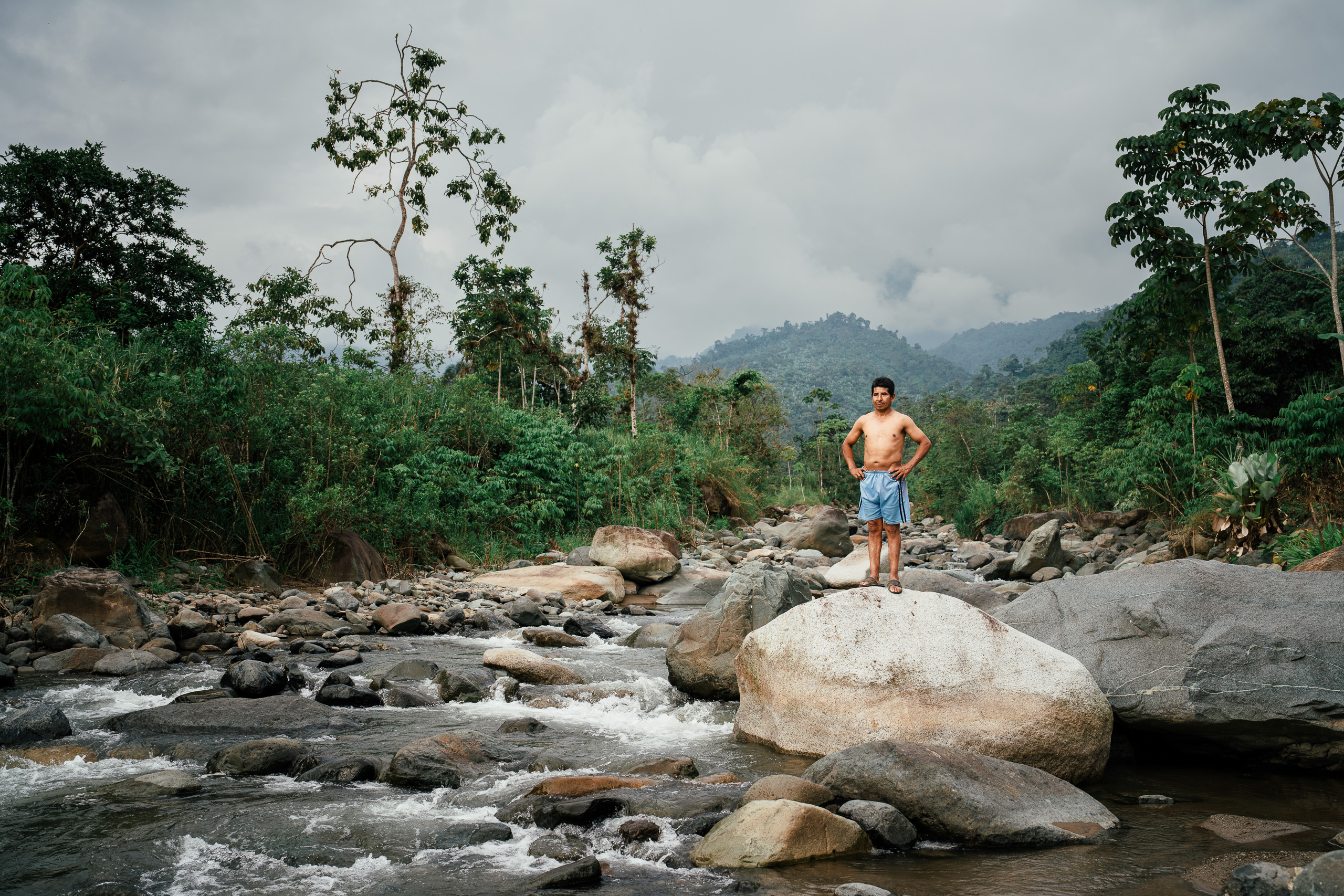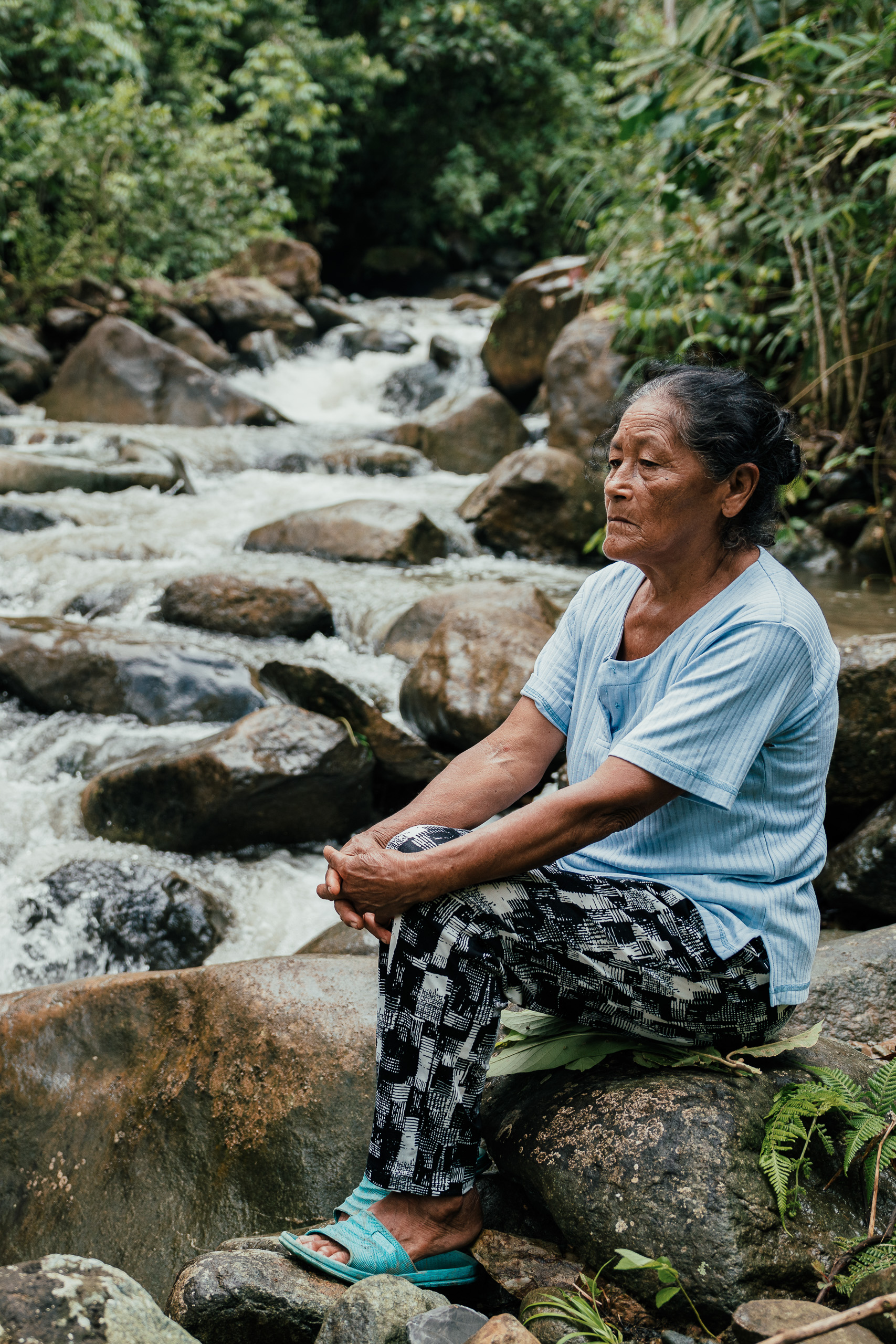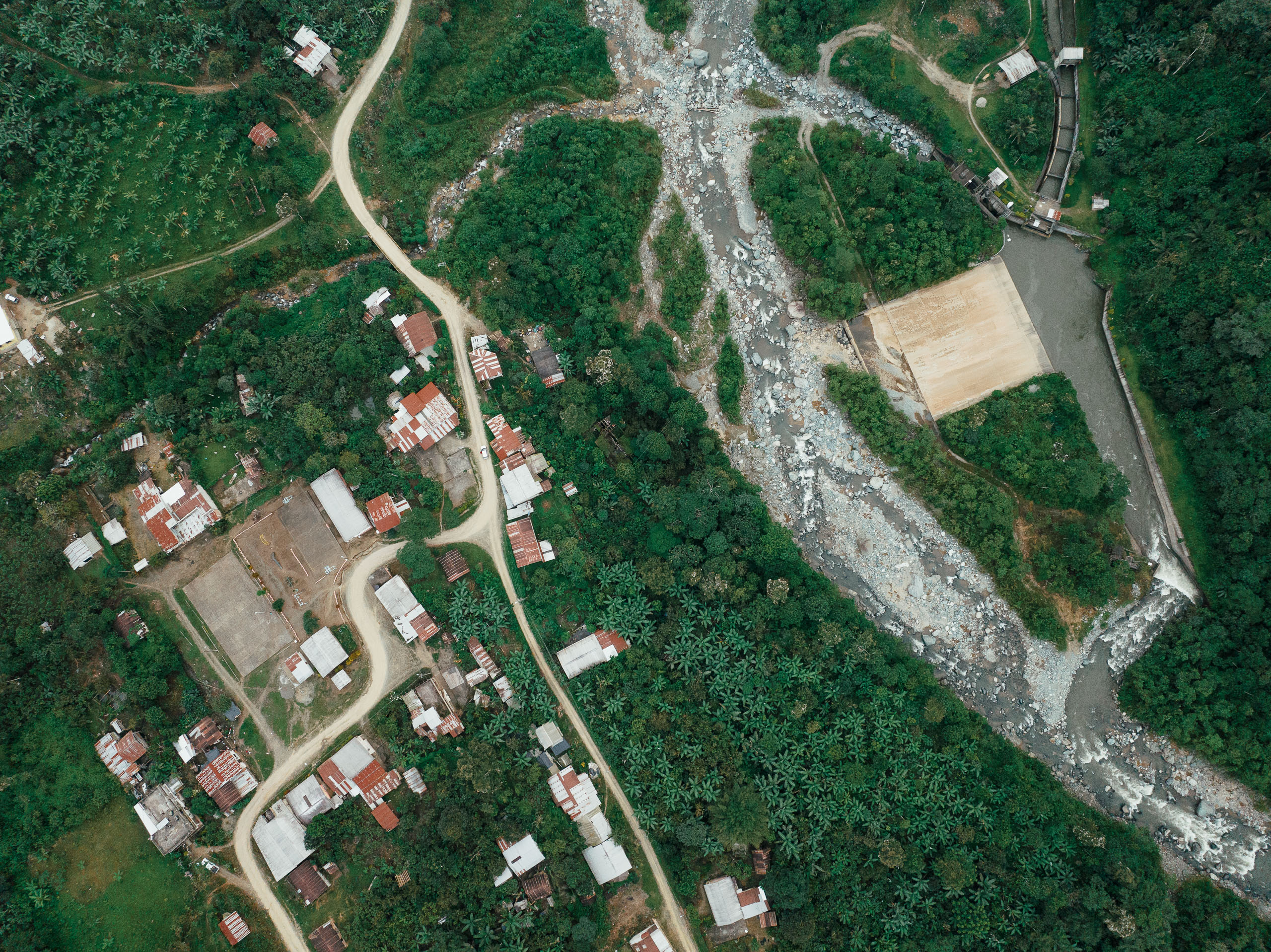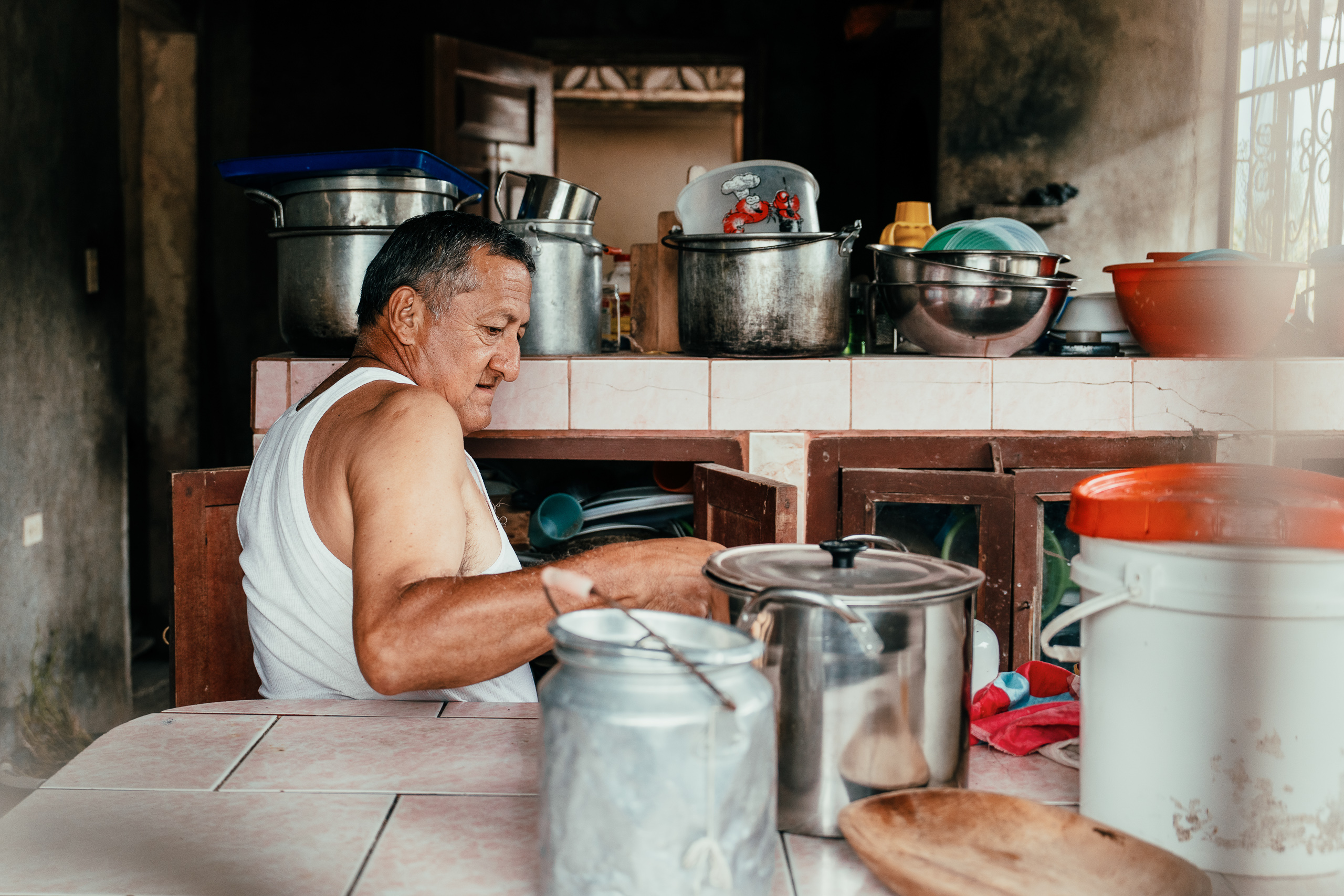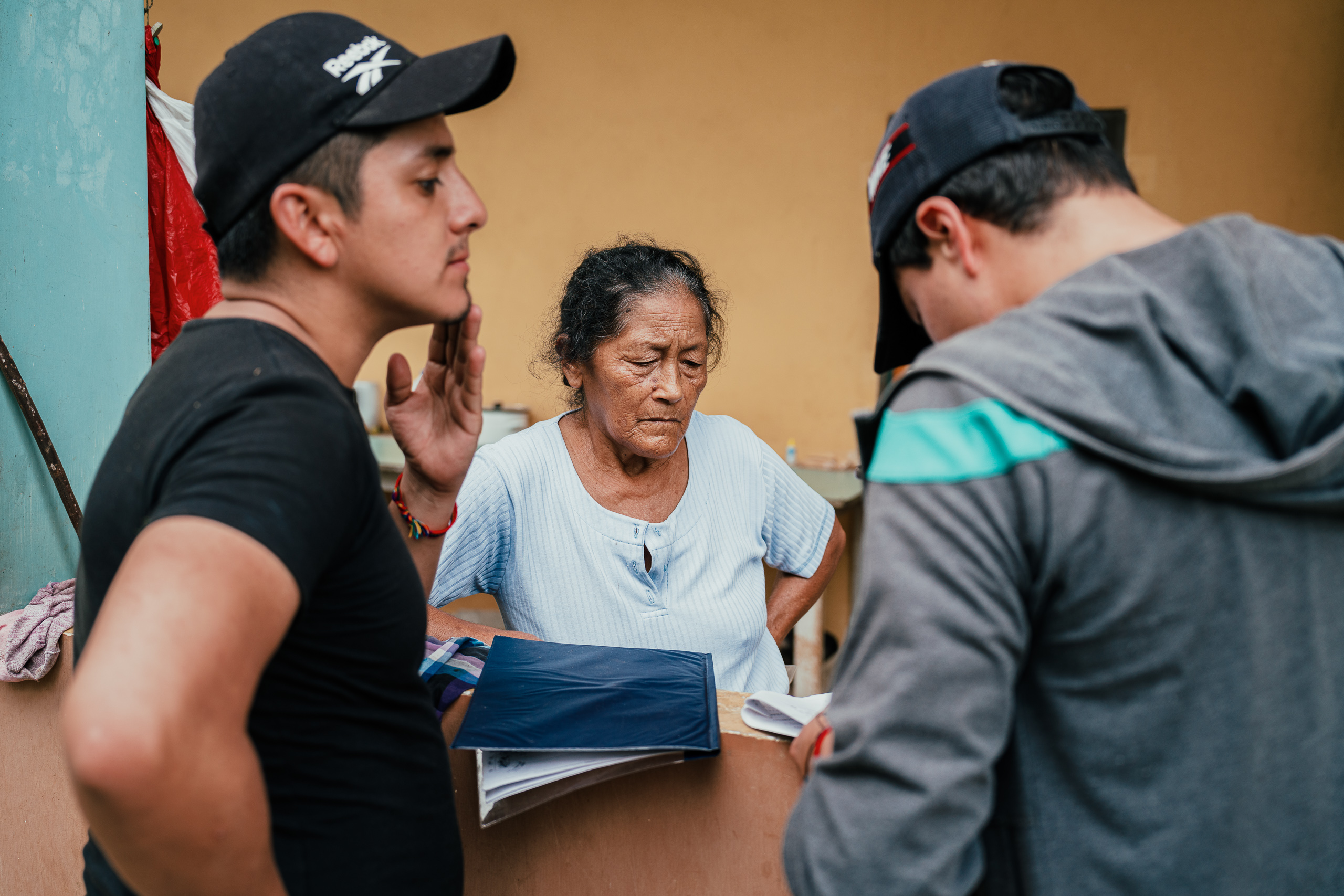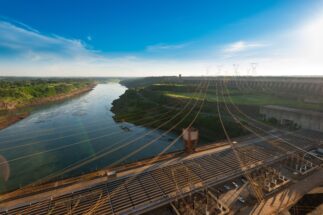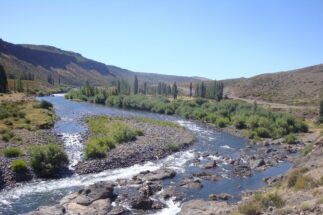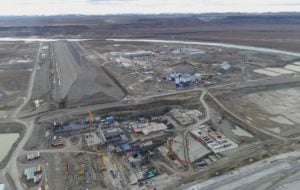As winter arrives and the Dulcepamba River begins to swell, Polo Jiménez prays its waters do not reach his house. His bedtime routine now includes leaving a torch, a change of clothes and his identification papers by the door, in case he needs to evacuate during the night.
Jiménez never imagined such a routine 30 years ago, when he settled in this part of central Ecuador in his twenties. Jiménez lives in San Pablo de Amalí, a community of 480 people in Bolívar province. Here in the western foothills of the Andes, water is everywhere. Such abundance has long been a blessing, but it is fast becoming a major concern.
“When I built [my house], I was 300 metres from the river, but now, as you can see, there are not even 15 metres,” says Jiménez. For this, he blames the San José del Tambo hydroelectric plant.
In 2005, Ecuador’s environment ministry authorised power company Hidrotambo to build this plant between the villages of San José del Tambo and San Pablo de Amalí. The plant entered operation in 2016, with an installed capacity of eight megawatts (MW). Since work on the project commenced, some of those living near the Dulcepamba River have denounced the diversions to its course that the project has caused. They claim that changes to the river have affected 140 communities by triggering deadly floods and economic losses.
Hydropower proliferation and paralysis
Hydropower generates over 80% of Ecuador’s electricity, with projects often sited in sensitive areas: the Ecuadorian Amazon, for example, is home to 18% of all active hydropower plants in the entire Amazon rainforest. This includes the country’s largest, the Coca Codo Sinclair dam, which has been linked to the disappearance of the San Rafael waterfall.
Hidrotambo’s San José del Tambo plant captures run-of-the-river hydropower, which means it relies on the natural energy of the Dulcepamba to move its turbines, rather than a reservoir-forming dam. Such plants are generally considered a more environmentally friendly way to generate hydropower compared to dams and reservoirs, which compromise a river’s ecology and increase flood risks. Nevertheless, the plant partially diverts the Dulcepamba River, bringing it closer to homes and causing a risk of floods when its levels are high.
Ecuadorian law does not grant the power to permanently deny authorisation for a project exploiting renewable resources on public land. Such proposals can therefore be submitted repeatedly until approval is granted, which is fuelling conflicts.
One of country’s best-known hydroelectric predicaments is the “paralysed” Toachi Pilatón in central Ecuador. This 254 MW project was first awarded in 2007 but, following a series of delays and a government bribery scandal, it is still only partially operational.
In the case of the 30 MW Piatúa hydropower project in the eastern province of Pastaza, Ecuador’s Ministry of Environment, Water and Ecological Transition (MAATE) granted it an environmental licence in 2014, but by 2019 construction had been halted by Pastaza’s provincial court. The ruling demanded a more thorough environmental impact report, and the case has since been picked up by Ecuador’s constitutional court.
Big changes on the Dulcepamba
Hidrotambo’s environmental impact report for the San José del Tambo hydroelectric plant, conducted in 2005, downplayed flood risks. The report acknowledged that displaced riverbed materials could block water drainage routes in the Dulcepamba river basin, but concluded that “the incidence of this phenomenon is low”.
Almost 20 years later, floods occur on a regular basis. In communications with Diálogo Chino, Hidrotambo’s general manager, Franklin Pico, describes the river basin as a “high-risk area” for flooding.
Jiménez first found himself living on the edge of the Dulcepamba in 2015, after the biggest flood in the river’s history brought its bank to his home. The flood also left three people dead and swept away houses, animals and crops.
Local resident Filadelfo Borja tells Diálogo Chino that before hydropower came to the area, Dulcepamba’s floods would destroy “a maximum of two cocoa plants”. In 2015, however, Borja lost all his crops and his family was forced to leave the area.
In 2014, Jiménez’s neighbour Manuel Trujillo filed a complaint with the Bolívar province court of justice. He claimed that the Dulcepamba had been diverted towards his property, which the court rejected. A year later, the floods washed away his house.
Following the 2015 flood, an inspection report by the ARCONEL, the national electricity regulator, advised Hidrotambo to build a breakwater to protect San Pablo de Amalí, warning that “the next flooding of the river could seriously affect the population.”
To date, a flood barrier has not been built. In the meantime, damaging floods have occurred in 2017, 2019 and 2023. During the flooding this year, the area’s sole access road was destroyed, and members of the local community tell Diálogo Chino that helicopters were needed to bring supplies.
Meanwhile, a recent drop in the Dulcepamba’s fish numbers has been noted by locals, including San Pablo de Amalí resident Carmen Guanulema: “They have disappeared; there is no more fishing like before.”
A 2021 study into Ecuador’s freshwater fish populations found that many native species are under threat from, among other factors, the physical alteration of rivers, as well as hydroelectric power plants. Run-of-the-river dams that divert significant amounts of water, like Hidrotambo’s on the Dulcepamba, can drastically alter fish habitats. Yet despite complaints from the population, no studies have been conducted on fish in this area to date.
Accusations of river manipulation
At the edge of the hydroelectric plant’s catchment area, Diálogo Chino observes a wall of stones. San Pablo de Amalí residents claim that this wall is built by Hidrotambo every summer, when the river is lower, to direct as much water as possible into the plant; in the winter, they claim Hidrotambo removes these stones. Consequently, local communities often suffer from water scarcity in the summer and floods in the winter.
Hidrotambo’s Pico tells Diálogo Chino that this wall of stones forms by itself, from “all the material that [a flood] carries from the higher areas of the mountain”. Furthermore, he asserts that the river has never been diverted by the company. However, some experts disagree. Jorge Celi, director of the UNESCO Chair on Tropical Freshwater Management, tells Diálogo Chino the wall could not have formed on its own. Based on his comparison of the Dulcepamba River during fieldwork in 2012 and 2018, Celi also says Hidrotambo’s hydroelectric plant “influenced the change in the riverbed”.
Similarly, a March 2023 flood risk inspection by Ecuador’s Secretariat of Risk Management identified an increasing risk of flooding in San Pablo de Amalí and attributed “some degree of responsibility” to Hidrotambo. The report presented the wall of stones as an intentional construction by Hidrotambo and called for its removal. As of July 2023, however, the wall was still standing.
Hydropower litigation spreading across Ecuador
Hidrotambo has initiated various criminal proceedings against residents of San Pablo de Amalí since 2006, when construction of the power plant began. During that year, the company commenced legal action against 42 people who refused to comply with eviction notices. In 2013, Hidrotambo accused two residents of “terrorism” – a threat regularly levelled at environmental defenders during the era of Rafael Correa’s presidency (2007–2017).
The community has responded with its own legal action. In 2018, San Pablo de Amalí residents filed a request with Ecuador’s water secretariat, Senagua, to review Hidrotambo’s water use. The government accepted the request in 2019 and Hidrotambo lost the right to use the Dulcepamba during the summer months.
On 30 May this year, the environment ministry wholly withdrew its authorisation for Hidrotambo to use the waters of the Dulcepamba. This decision was triggered by instances of non-compliance uncovered by the review. Hidrotambo’s infractions included capturing a higher flow of water than authorised between July and December, and failing to submit agreed-upon redesigns for the plant to address its water abstraction issues.
Hidrotambo appealed the decision less than two weeks later, citing “violations of rights” during the review process. The ministry was meant to give a final verdict on the appeal within 90 days, but has yet to do so. With no verdict forthcoming, and with the country in the midst of political upheaval and elections, the company continues to operate, despite the ministry’s order.
The company is also being pursued through Ecuador’s constitutional court: in September 2019, the country’s Ombudsman’s Office and the Ecumenical Human Rights Commission filed a so-called extraordinary action for protection against Hidrotambo.
In 2008, Ecuador became the first country to protect the rights of nature in its constitution. Environmental lawyer Hugo Echeverría tells Diálogo Chino that the Hidrotambo-Dulcepamba case was selected by the constitutional court to “create jurisprudence” – or set a legal precedent – for defending these rights. It is one of six cases chosen by the court to build this jurisprudence. This set also includes the Piatúa hydropower case, and a well-known case named after a monkey called Estrellita, which ruled that wild animals have legal rights.
When a final decision arrives, the Hidrotambo-Dulcepamba case will be the first in which Ecuador’s constitutional court rules on the standards and limitations of state-managed renewable and non-renewable resource exploitation, as well as the actions of concessionary companies and whether they infringe upon collective rights and the rights of nature. In addition, this legal process will determine whether the possible inaction of the state caused a violation of human rights, because citizens had already earlier denounced the problems resulting from the overflowing of the river.
Ecuador’s hydroelectric future
Meanwhile, a hydroelectric plant twice the size of the Coca Codo Sinclair dam is currently being planned in Morona-Santiago province, in Ecuador’s south-east. Named after the Santiago River that it intends to exploit, the project would have a maximum capacity of 3,600 MW.
The project is scheduled for operation by 2031, although an operator is yet to be announced. It does not have an environmental licence.
“It is a unique river,” Celi says of the Santiago, one of the main arteries connecting the Peruvian and Ecuadorian Amazon. “We are talking about a hydroelectric facility that is 200 metres high, on a torrential river that carries a lot of sediment. All of these will stop behind the dam, and that has a strong impact on the downstream dynamics.”
Back in Bolívar province, Polo Jiménez and the communities of the Dulcepamba River continue to navigate the local consequences of Ecuador’s hydropower reliance, and hope for solutions. “I no longer want to be afraid of falling asleep,” he says. “I just hope there is more security so that the river doesn’t come, and will leave us alone.”
This story was produced in partnership with Youtopía Ecuador, and with support from Internews’ Earth Journalism Network.

